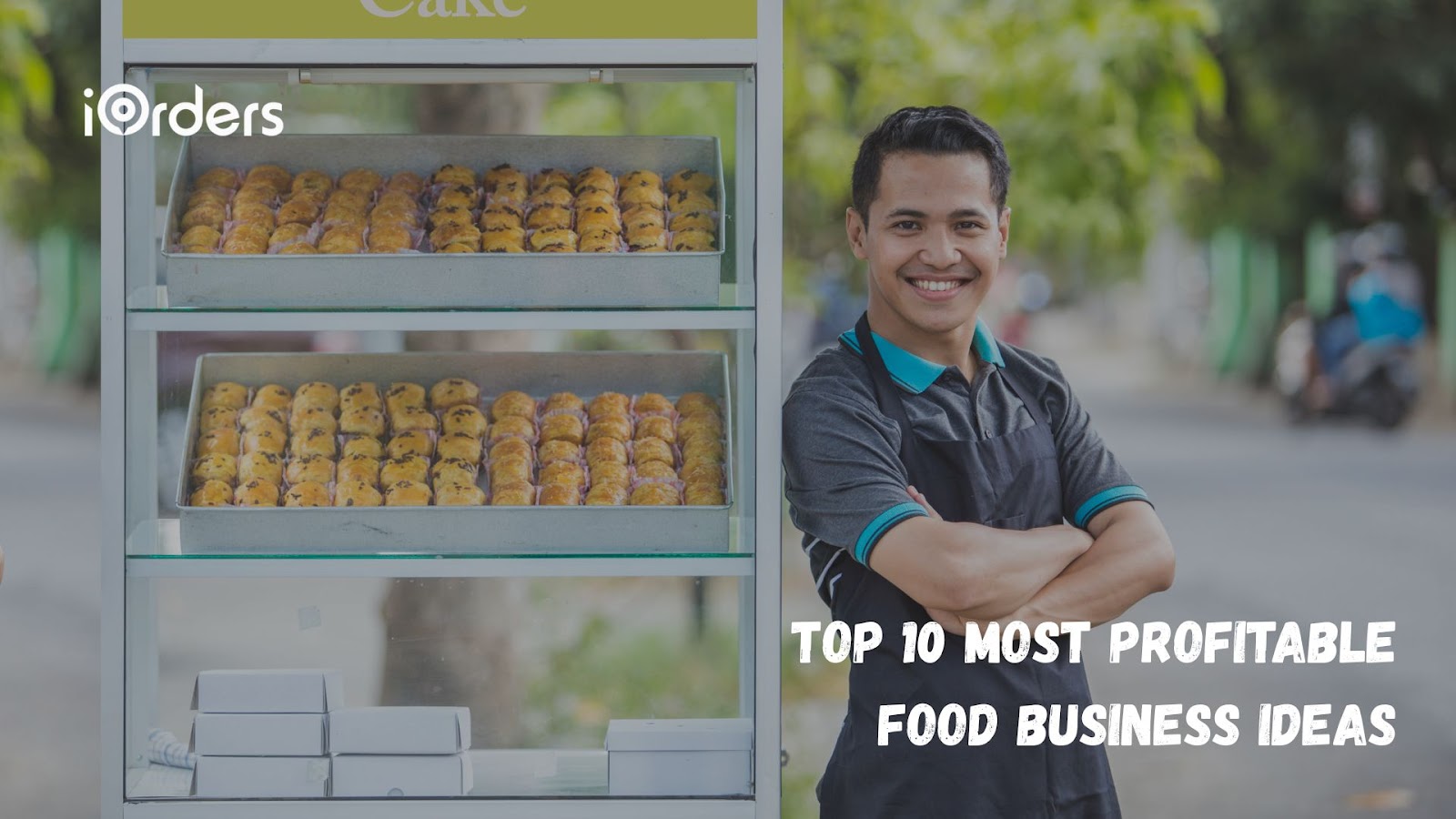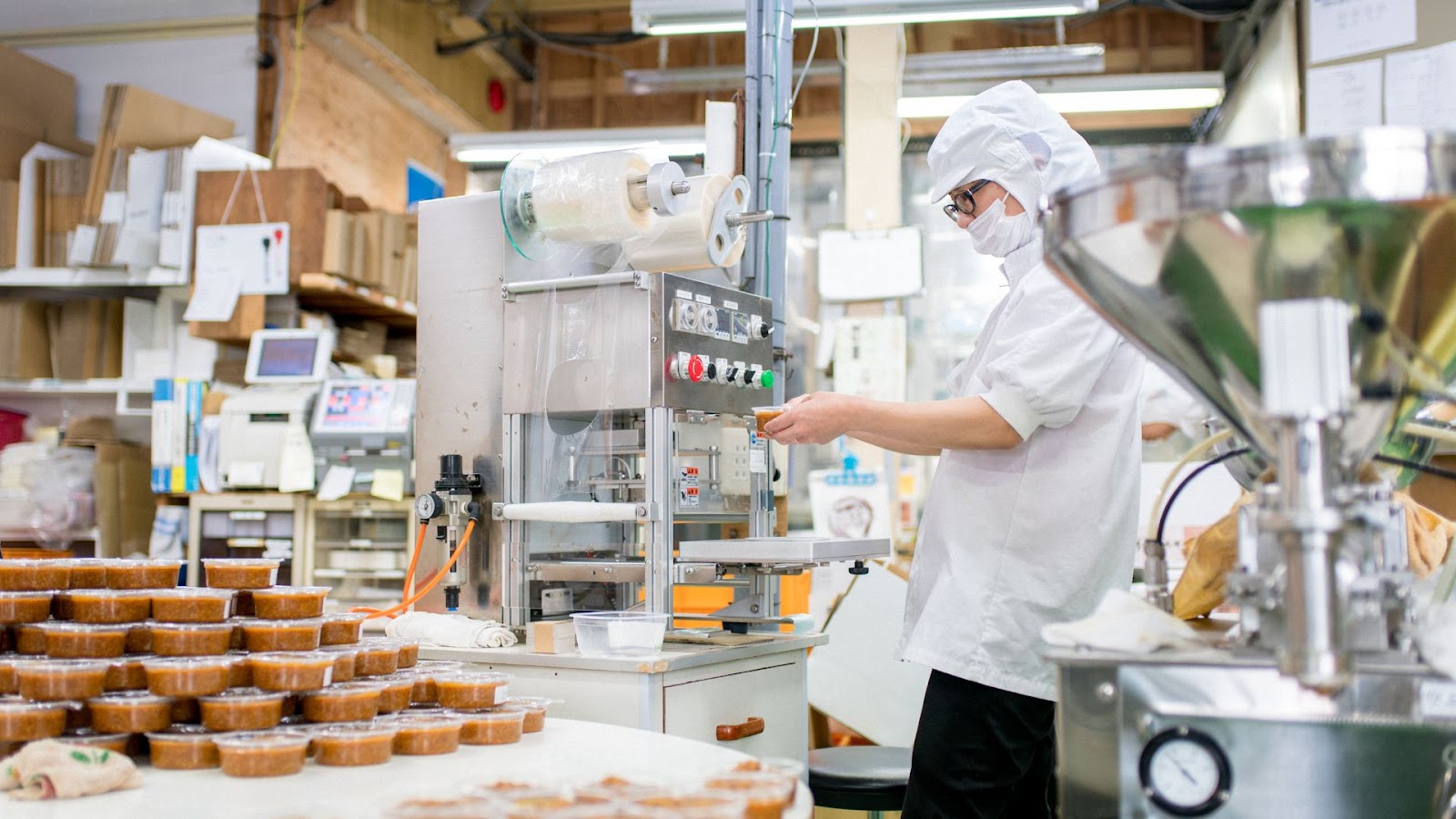July 25, 2025

Are you looking for the most profitable food business to start in 2025? With Canada’s foodservice market projected to hit around $135.2 billion this year and grow to nearly $303.7 billion by 2030, the opportunity is huge. Consumers now demand healthier, eco-friendly, and convenient food options, especially online or delivered.
This shift means concepts like cloud kitchens, plant-based meal prep, and artisanal bakeries are gaining traction. These profitable food business ideas blend low overhead, digital ordering, and strong brand appeal. Whether you're dreaming of a dessert bar, a vegan grab‑and‑go spot, or a specialty meal kit service, the demand is ripe.
In this guide, you’ll learn about the most profitable food business ideas for 2025, understand why they work, and how to set them up for success. Let’s understand the concepts that combine trend relevance with smart economics and help you find your winning path.

Starting the most profitable food business is not just about what sells today. Rising food costs and labor shortages demand models with better margins. Consumer behavior is shifting fast. People want healthier meals, eco-friendly packaging, and the ease of digital ordering.
Choosing a scalable and adaptable concept is essential. You must adjust to market trends, seasonal demands, and delivery tech updates. Location flexibility also matters, especially with the rise of cloud kitchens. Another factor is competition; standing out with unique branding and focused menus increases success rates.
Remember, your choice impacts daily operations. Models with simpler menus or centralized production are easier to manage, train staff for, and expand later.
Smart decisions today protect your business tomorrow. Ready to explore food business ideas that promise profit, purpose, and growth in 2025? Let’s discuss the top opportunities waiting for you.

Choosing the most profitable food business idea can define your success in 2025. The food industry is shifting toward convenience, health, and direct online ordering. Trends create new profitable food business ideas for owners ready to adapt.
Here are the top 10 high-demand, future-ready ideas to consider:
Cloud kitchens operate without dine-in space, cutting rental costs. You can run multiple virtual brands from a single kitchen, expanding menus without extra real estate. The rise of delivery apps and online ordering makes this one of the best business models for 2025.
Brands like Rebel Foods and Ghost Kitchens Canada show how successful multi-brand cloud operations can be.
Also Read: Cloud Kitchen Opening Process for Beginners in 2025
Consumers want convenience without sacrificing health. Businesses offering calorie-counted, nutrition-focused meal prep services see repeat orders from fitness-focused professionals and families.
Pairing these services with subscriptions or weekly plans ensures steady cash flow and low wastage, making it a smart food business idea for 2025.
Bakeries offering handcrafted sourdough, gluten-free treats, or specialty pastries earn high margins on small batches. Adding online ordering and local delivery widens reach beyond walk-ins.
Many Canadian micro-bakeries now operate from small units or home kitchens while selling through social media and direct delivery apps.
Food trucks have lower startup costs than restaurants and can shift locations based on demand. Ethnic cuisine like Korean BBQ, Mexican tacos, or Indian chaat attracts customers looking for authentic street food.
In Canada’s growing multicultural cities, food trucks remain among the most lucrative food business options.
Vegan food is no longer niche. The market is growing due to environmental and health awareness. Plant-based burger chains, vegan pizza outlets, or tofu bowl shops are gaining traction in urban areas.
Lower ingredient costs and scalable menus boost the potential for success in this industry.
Also Read: Top 10 Digital Marketing Strategies for Vegan Restaurants
Cold brew, matcha lattes, turmeric shots, and functional drinks attract health-conscious consumers. Specialty beverage bars have high margins, especially if paired with grab-and-go healthy snacks.
Their small footprint requirements make them perfect for high-traffic zones like business hubs or campuses.
People crave comfort desserts like donuts, brownies, or fusion pastries. Dessert bars focused on takeout and delivery avoid high dine-in costs while serving quick orders. Limited-time flavors or Instagrammable offerings drive social media buzz and sales.
Meal kits provide DIY experiences with chef-curated recipes and pre-measured ingredients. They attract busy professionals and families wanting home-cooked meals without planning or grocery shopping.
Gourmet kits offering global cuisines or fine-dining experiences at home remain a top trend in the food business.
Consumers are shifting towards sustainable living. Bulk food stores that also offer fresh, ready-to-eat meals made from their stock reduce packaging waste and appeal to eco-conscious buyers.
This hybrid grocery-food model creates multiple income streams from one space.
Also Read: Best Restaurant Inventory Tracking Software of 2025
With the rise of intimate gatherings and corporate micro events, private chefs offering in-home dining or small event catering are in demand. This model needs minimal upfront costs if you already have culinary skills, making it a flexible and high-earning food business.
Each of these ideas balances current trends with future potential. But there are common mistakes that owners make while starting these food businesses. Let’s understand how to avoid them to protect your growth.

Even the most profitable food business ideas can fail if you skip the basics. Many owners focus only on products but miss essential operational steps. Knowing these mistakes early helps you plan better, avoid losses, and build strong from day one.
Here are the top mistakes and how to overcome them:
These mistakes can turn a great idea into a loss-making venture. Now, let’s see how iOrders helps you build, grow, and manage your food business with confidence in 2025.

Running the most profitable food business in 2025 demands smart tools and strong support. iOrders helps restaurants simplify operations, boost profits, and build customer loyalty with solutions personalized for modern food businesses like yours.
Here are the top industry-level services that iOrders offers:
iOrders equips you with the right tools to grow your food business profitably. Partner with iOrders today and scale your new business idea from the beginning.
Starting a profitable food business takes more than a good recipe. You need a clear plan, knowledge of profitable trends, and the ability to adapt quickly. From cloud kitchens to private catering, each idea we discussed offers unique opportunities for growth.
Remember, success comes with its own challenges. Choosing the right business model, managing costs, staying compliant, and building a strong digital presence are key to long-term profits. Planning ahead with the right strategies will set your business apart in this fast-changing market.
Want to build a food business that grows without limits? Book a free demo with iOrders today and see how our solutions can turn your ideas into a profitable reality.
1. What food business is the most profitable?
Cloud kitchens consistently lead in profitability, thanks to low rent and staffing costs. Healthy meal prep services and specialty bakeries show strong margins as well. Profitability depends on your target market, pricing, and operational efficiency. Combining online ordering and delivery expands reach and keeps overhead low.
2. How much does it cost to start a small food business?
Starting costs vary based on the model. A food truck may need $50,000–$150,000, while a cloud kitchen can start around $30,000. Expenses include licenses, equipment, marketing, and inventory. Starting small and scaling with demand keeps risk low and cash flow steady.
3. Which food has the highest profit margin?
Beverages such as specialty coffee and smoothies often bring in margins over 70%. Baked treats, like cupcakes, cookies, and artisan breads, are also popular for their high profits. With careful menu design and portion control, you can keep those strong margins and delight your customers.
4. Is a food delivery business profitable?
Yes, a food delivery business can thrive if managed thoughtfully. Demand for food delivery keeps rising. Profits depend on delivery costs, packaging, and pricing strategy. Using your own ordering platforms instead of third-party apps helps save commission fees and improves margins, making food delivery a sustainable business arm.
5. How can I make my food business stand out?
Offer unique products or experiences, like vegan fast food or meal kits with local ingredients. Build a strong online presence with clear branding, easy ordering, and fast delivery. Engage customers with loyalty programs and personalized marketing to drive repeat business and word-of-mouth growth.